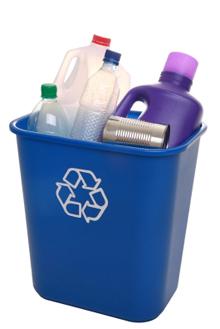 Toxins and Pollutants are brought into a home daily through water, food, soil, dust and household cleaning products. They come in without us even know they are entering our houses. For example, the dangerous toxin phenol can be found in some disinfectants, antiseptics and even air fresheners.
Toxins and Pollutants are brought into a home daily through water, food, soil, dust and household cleaning products. They come in without us even know they are entering our houses. For example, the dangerous toxin phenol can be found in some disinfectants, antiseptics and even air fresheners.
Yet research shows that continued exposure to phenols and other toxins may have deleterious effects on our nervous and respiratory systems, as well as cause dermatological problems. It is important to educate yourself to be able to reduce your risk and exposure.
After you begin to educate yourself about the chemicals and toxins on the labels of the products in your home, you may want to replace some of the toxic agents you find with nontoxic alternatives. For some practical ideas on reducing your risk to toxic chemicals, here are a few tips:
- Read Labels: Carefully read the list of ingredients on all labels of your household products to make sure you are not using products containing harmful toxins. If you go to the following Web site http://www.leas.ca/Cleaners-and-Toxins.htm and click on the cleaners and toxins guide, it will take you to a very informative site and you will be able to download this information. You will learn about several hazardous substances, one of them being Silica, which is found in many abrasive cleaners, as well as about a potent reproductive toxin Toluene, which is in most nail polishes.
- Nutrition: Choose your seafood wisely in order to limit the amount of mercury that you ingest. Limit the amount of canned tuna and avoid swordfish, shark and bluefish; instead purchase wild salmon, tilapia or Pacific cod. Avoid frying food and use grilling, broiling or roasting cooking methods. If possible, purchase organic when choosing those fruits and vegetables that otherwise have the highest pesticide levels.
- Drinking water: Install a water filter to prevent the ingestion of heavy metals. You can review the performance rating several top brands of water filters by Goggling water filter comparisons, where there are several sites from which to choose.
- Pot and Pans: Try to minimize the use of Teflon or any other pan that has a nonstick coating. The Environmental Working Group found that this cookware more quickly reaches temperatures that produce toxic particles and fumes. You may want to choose stainless steel or cast iron for your cookware.
- Microwave: Never microwave with plastic. Use packaging that is labeled “microwave safe” or use glass or ceramic containers. Although the literature is controversial, most health advocacy groups feel that dioxin is released in plastic when it is microwaved.
- Wash your hands: Be cautious of using antibacterial soaps. They can contain pesticides that can be absorbed through the skin and aren’t healthy for the environment. Use a simple soap with water and scrub hands for 20 seconds.
- Lawn and garden materials: Try to minimize the use of weed killers and insecticides. The toxic ingredients can get into our system through skin contact and inhalation.
- Shoes: Remove your shoes before walking into the house. Pesticides from outside debris, lawns and inconspicuous toxins on the ground can be easily tracked from outside back into your home and remain there for long periods of time.
- Washing clothes: Limit your use of bleach and use lemon juice as an alternative for whitening. Just because some companies are getting great “green marketing gimmicks” do not trust the advertising. Read all ingredients on your detergent bottles. Limit the amount of chemicals mixing with your clothes by avoiding the addition of any softeners into your washer or dryer.
- Cleaners: If you get any of your clothing cleaned from a professional cleaner, let these clothing items stay outside for about 8 hours to keep some of the chemicals and odors from coming back into your home.
- Vacuuming: Always vacuum with a filter or even better a HEPA filter. A HEPA filter traps very small particles that other vacuum cleaners may recirculate back into the air of your home. Since there can be multiple allergens in your home, including dust mites, vacuum and dust regularly.
- Personal Products: Choose your personal products and cosmetics made by companies that do not have toxic ingredients. The Environmental Working Group’s Skin Deep web site is an extremely useful tool (http://www.cosmeticsdatabase.com/index.php). Although a product may be listed as low hazard on this Web site, there is no guarantee that it is safe. You also need to check on the safety of the products listed in the low hazard groups.
Linda Winkler Garvin, R.N., M.S.N., of Alameda, California, is Director of Health Management Associates, a health advocate and educator with an advanced degree in nursing. She assists individuals in navigating the complexities of their health problems from medical treatment, health insurance issues, chronic diseases and chronic pain. She is the author of several articles, including nutrition, health insurance, guided imagery & chronic health problems. Learn more at www.healthmanagerbayarea.com or e-mail her at garvin_linda@yahoo.com.
